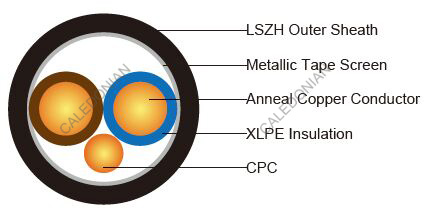I don't think there was any certainty.
Did I misunderstand this?
You should have read the end of that back-and-forth, If you had, you will have seen the agreed conclusion that, as far as the regs are concerned, it would seem that any cable with an earthed metal covering is seemingly deemed OK for burying, provided only that the metal covering is "adequate as a CPC", seemingly regardless of the material or mechanical properties of that covering.
522.6.204 does indeed state that therefore I can conclude that the cable has an earthed metallic covering. (screen more usually used for emf reasons)
A strange conclusion, given that the standard describes itself as "Specification for 300/500 V
screened electric cables"
The only difference in requirements for being buried in a wall or the ground is that of a covering or a sheath respectively.
It would be difficult to distinguish semantically between these two words, would it not?
A difficulty not helped (again) by sloppy language in the Regulations.
Unless there is a "proper" definition elsewhere of which we are unaware. After all - nowhere does BS 7671 define 'core', or 'multi-core' or 'single-core', but it uses these terms, and generally people know that the top one here is a single core, and that the lower one has 3 cores, not 21.
But returning to BS 8436, the standard describes the use case as "
for use in walls, partitions and building voids". Not underground
The table of contents:
Chapters 9 & 10 would indicate that the screen is not a sheath, and that the screen and sheath are different layers.
This is how IDH describe their Guardian cable:
- Plain annealed stranded copper conductor to BS6360
- XLPE insulation to BS6889
- Aluminium screen tube, applies longitudinally.
- CPC tinned annealed stranded copper to BS6360.
- LSZH sheath to BS EN 50267-2-1:1999 and BS EN 61034:2005, UV stable.
That's not a metal sheath.
As I said earlier, the only cable I am aware of which
says it is metal sheathed is MIMS.
I'm pretty sure that, before this discussion arose, if asked "which part of a cable is the sheath?", probably most people would say "the outer layer",
and that anyone trying to say "no, it's one of the inner layers", would have an uphill struggle.




